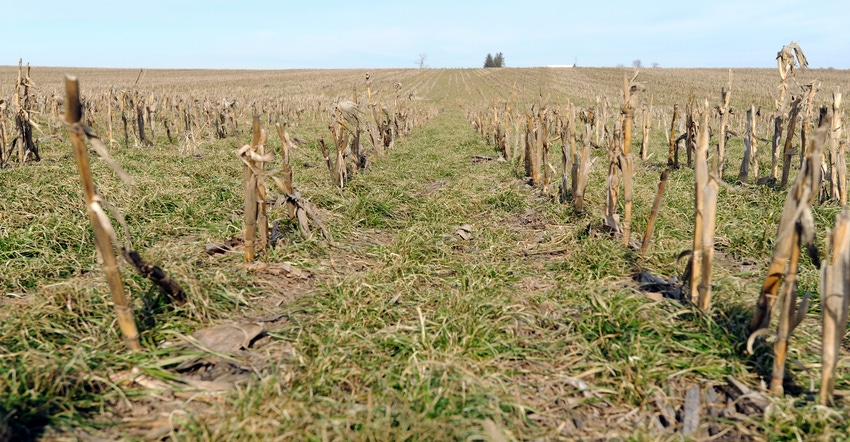January 19, 2017

During the Obama administration, USDA enrolled a record number of acres in conservation programs, which will protect natural resources on working lands.
The USDA Natural Resources Conservation is accepting initial applications until Feb. 3 for the Conservation Stewardship Program at its local offices and on its website. CSP is a national program, tailored at the state and local levels to address regional conservation concerns.
Paul Ackley, who farms in Taylor County in southwest Iowa, says that enrolling in this program allowed him to put more conservation practices on land he rented, as well as land he owns.
Before enrolling, Ackley noticed the soil was looking tired after several years of cropping corn and soybeans. His soybean plants even turned white in certain places where the soil was particularly depleted.
Cost-share for certain practices
With payments from CSP, Ackley was able to add soft red winter wheat to his corn-soy rotation, and the soil started looking healthier. He also used CSP payments to begin rotational grazing on part of his land. Now his pastures are more diverse, and he has more warm-season grasses in them.
CSP is designed to reward farmers and ranchers for using certain conservation practices on their land. It provides comprehensive conservation assistance to whole farms. Farmers and ranchers can receive payments for practices, such as planting cover crops, installing buffer strips or starting rotational grazing. For more information, contact your local NRCS office, or the Center for Rural Affairs at [email protected] or 515-329-0172.
CRP investments in Iowa
John Whitaker, Farm Service Agency state executive director, announced in early January the addition of 115,000 acres that can be enrolled in the Conservation Reserve Program in Iowa. This added enrollment is for critical wildlife and water quality efforts, in addition to the 5,423 acres of CRP Grasslands announced in December.
“Over the past 30 years, CRP has helped farmers to offset the costs of restoring, enhancing and protecting certain grasses, shrubs and trees that improve water quality, prevent soil erosion and strengthen wildlife habitat,” says Whitaker. “Given the national cap of 24 million acres that can be allowed in this program, it is more important than ever to pursue multiple benefits on each acre of CRP,” erosion prevention, water conservation, recreation for sportsmen, habitat for pollinators and protection of grazing land.
Nationwide, farmers and ranchers can enroll up to 1.1 million acres to restore high-priority wildlife habitat through the CRP State Acres for Wildlife Enhancement (SAFE) program, wetlands restoration, or pollinator habitat improvements. In Iowa, an additional allocation of 50,000 acres and 25,000 acres are now available to enroll in the existing Gaining Ground for Wildlife SAFE (50,000) and Pheasant Recovery SAFE (25,000) options. In addition to soil erosion prevention and water quality improvements, SAFE provides an opportunity for landowners and farmers to enroll land into CRP to establish a wildlife habitat cover to enhance environmental benefits for the designated or surrounding areas.
New SAFE project approved for Iowa
In addition to the existing Iowa SAFE project announcements, an all-new SAFE project, called Iowa Early Successional Quail Habitat has been approved for 40,000 acres. The Iowa Early Successional Quail Habitat SAFE project in addition to soil erosion prevention and water quality improvements is designed to restore early successional habitat where it will be the most beneficial for bobwhite quail. Restoring top quality winter, nesting and early successional habitats will help increase Iowa quail populations. Other grassland birds and species, especially pollinators, will benefit as well.
About 70% of the nation’s land is owned and tended to privately, and U.S. farmers, ranchers and landowners have willingly stepped up to address the growing impacts of a changing climate. With USDA support, they work to implement voluntary practices that improve air and water quality, prevent soil erosion, and create and protect wildlife habitat.
Since 2009 USDA has invested over $29 billion to help farmers make conservation improvements, working with as many as 500,000 farmers, ranchers and landowners to protect land and water on over 400 million acres nationwide. To learn more about FSA’s conservation programs, visit fsa.usda.gov/conservation or contact a local FSA county office. To find your FSA county office, see offices.usda.gov.
You May Also Like




